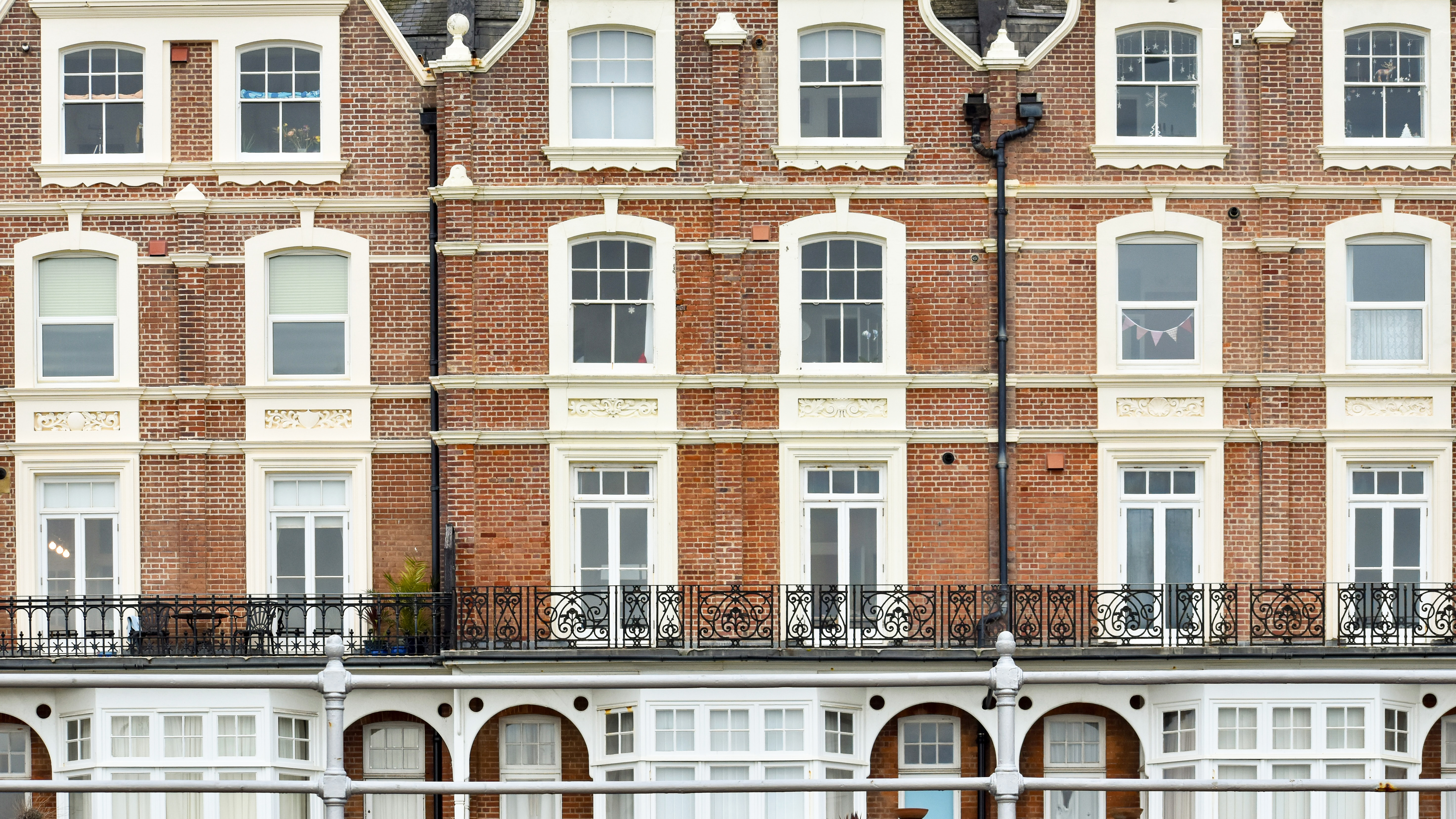
The Decent Homes Standard (DHS) was established in 2000, setting an initial target for housing quality to be achieved by the end of 2010, and continues to apply as a performance measure in England. Its objective was to improve housing stock and to provide better accommodation standards for tenants.
Given that the definition of a 'decent home' has not been updated since 2006, the government is now reviewing the standard's requirements.
What the current standard requires
The 2006 definition requires assessment of a dwelling against four measures:
-
the current minimum standard for housing, which has been the housing health and safety rating system (HHSRS) since 2006
-
a reasonable state of repair
-
reasonably modern facilities and services
-
a reasonable degree of thermal comfort.
The DHS applies to all social housing except leasehold, shared ownership properties and other specific exemptions. In 2002 it was extended to include the private rented sector (PRS) with a focus on reducing the proportion of vulnerable households living in non-compliant homes; Circular 05/2003 sets out how a local authority should develop a private-sector renewal strategy. Arguably the greatest effect on the PRS is the threat of enforcement action under the HHSRS.
In addition to the DHS and HHSRS, all landlords must now comply with the Homes (Fitness for Human Habitation) Act 2018. The HHSRS itself is currently under review and modifications may be made to better align it with any updated DHS and streamlining processes for environmental health officers.
DHS influence declines with time
The introduction of the DHS placed renewed emphasis on effective asset management, including the need for robust stock condition data and works programming. The initial 2010 target also prompted considerable reinvestment in a range of components such as heating systems, roofs, windows, kitchens and bathrooms to ensure housing complied with the standard.
In the early days it was clear that many social landlords, whose rents are constrained by caps, could not afford to meet the standard. The government then made considerable additional funding available, with the 2004 Housing Stock Options Appraisal process prompting several stock transfers and the formation of new arm's-length management organisations (ALMOs).
Several ALMOs were permitted to extend their programmes beyond 2010 to meet the standard, although in the absence of any further funding support, many ALMOs have now been reabsorbed into their respective local authorities.
While the additional government funding expired with the 2010 deadline, the DHS remains a core aspect of the Regulator for Social Housing's Home Standard. Social housing landlords must therefore continue to report on whether their stock meets the DHS, and are encouraged to maintain compliance.
'The DHS remains a core aspect of the Regulator for Social Housing's Home Standard'
Good levels of DHS compliance at the end of 2010 marked a high point for social housing stock condition, which has since waned because of reduced resource levels and other priorities.
Many of the components installed in the original ten-year programme will now be nearing the end of their useful life and will be in need of further renewal, placing a burden on business plans over the next ten to 15 years.
The DHS is not without its challenges. To be specific, some parts are open to interpretation: for example, what exactly is 'adequate space and layout' in a kitchen?
The 'permissible failure' options for modern facilities have also encouraged selection of lower-value remedies, meaning that even when components have failed their individual tests under this criterion, the property as a whole can pass. Auditing of various housing client systems has identified differences between organisations in the way the DHS is calculated and reported.
Why review is long overdue
The 2009 Beyond Decent Homes report by the Communities and Local Government committee recommended that the government 'establish national guidance on the collation of stock condition data, to reduce inconsistencies in the assessment of decency by landlords'.
There was no explicit penalty for failing to attain and maintain the DHS; although as part of the Home Standard non-compliance affects regulatory ratings. Most social landlords continue to report relatively low levels of non-decency, although the focus on DHS compliance has waned in recent years.
Robust, up-to-date stock condition surveys are required, so some landlords' assessments may be using old or flawed data, with actual levels of non-compliance likely to be higher than reported.
Arguably, housing asset managers are now facing their biggest challenge, with competing pressures for budgetary allowances, including:
-
carrying out ongoing repairs and maintenance
-
meeting fire safety requirements under, for example, the Fire Safety Act 2021 and the Fire Safety Regulations 2022
-
observing building safety measures such as the Building Safety Act 2022
-
working towards sustainability, including many local authorities' commitments to achieving net-zero carbon well ahead of national targets
-
anticipating the influence of The Charter for Social Housing Residents: Social Housing White Paper, including better resident engagement.
White papers set focus for concerns
The social housing white paper, published in November 2020, first suggested a refreshed DHS. Following the formation of a working group, the process was paused 'pending further consideration' in summer 2021.
The Levelling Up the United Kingdom white paper of February 2022 indicated the government's ambition to halve the number of non-compliant rented homes by 2030, across social housing and the PRS.
The largest improvements are expected in the lowest-performing areas, supporting the principles outlined in a further white paper, A Fairer Private Rented Sector. According to the English Housing Survey, 21% of PRS homes are non-decent and 12% present a serious category 1 HHSRS hazard – significantly more than in the social housing sector.
'According to the English Housing Survey, 21% of PRS homes are non-decent and 12% present a serious category 1 HHSRS hazard'
The DHS review has now resumed, including a six-week public consultation on the DHS within the PRS that opened on 2 September.
Areas of consideration include:
-
ventilation
-
home security
-
thermostatic mixer valves
-
window restrictors
-
electrical safety
-
waste management
-
water efficiency
-
green spaces
-
digital connectivity
-
resident engagement.
Some areas have already been the subject of revisions to the Building Regulations Approved Documents R, P, Q and F, for example.
Thermal comfort, which is DHS criterion D, and energy efficiency may fall outside the review, as updated regulations for these are being pursued separately. It is likely that they will align with the Clean Growth Strategy to raise the minimum energy efficiency standards for existing dwellings from an energy performance certificate rating of E to C; and align with The Future Homes Standard through revision of Parts L and F of the Building Regulations.
The UK has set a target in law for all greenhouse gas emissions to be net zero by 2050, and any changes will also align with that goal. Landlords should already be expediting installation of any additional smoke and carbon monoxide detectors required to comply with the new Smoke and Carbon Monoxide Alarm (Amendment) Regulations 2022.
Enabling effective remit for revised standard
As can be seen, the new DHS needs to align with an increasing array of standards and regulations; although care is needed not to overcomplicate the core principles of decency and thus make accurate assessment even less likely.
We can expect, and should prepare for, the new DHS to have a wider remit and a greater reach into the private sector. What remains to be seen – in the context of skills shortages, a projected recession and a cost of living crisis – is what additional resources and grants will be made available to help landlords meet the predicted commitments. The diverse range of PRS landlords will need clear guidance and support to assess whether their properties meet the DHS.
Everyone deserves a home that is safe, warm and decent. The new DHS should better help us achieve this objective if it is properly focused and supplemented by the funding and support needed to help landlords adapt to the new regime.
'The diverse range of PRS landlords will need clear guidance and support to assess whether their properties meet the DHS'
Richard Hand FRICS is a partner and head of property consultancy at Ridge and Partners LLP
Contact Richard: Email
Related competencies include: Building pathology, Housing maintenance, repairs and improvements, Landlord and tenant, Legal/regulatory compliance


